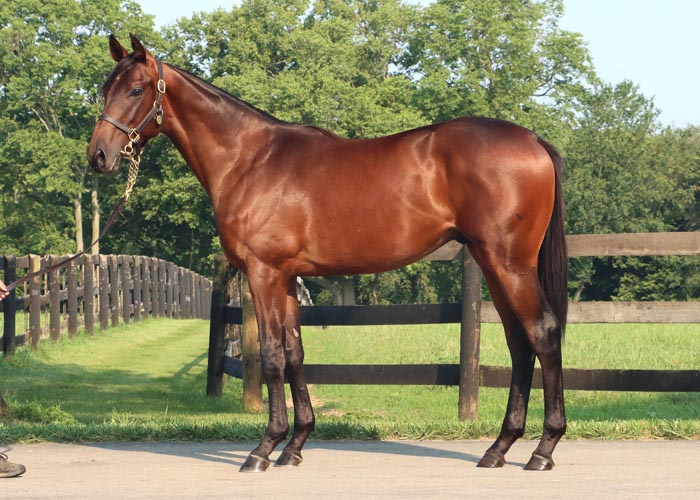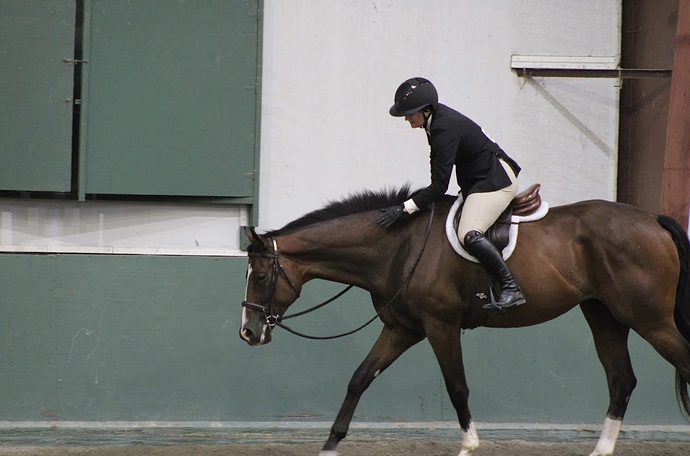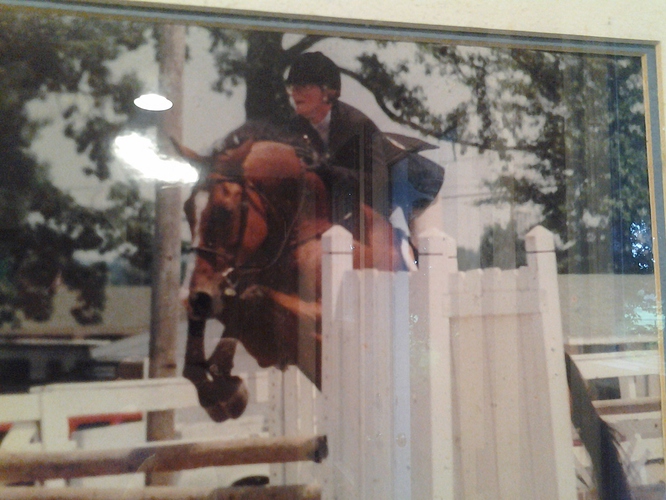Why would you not buy a TB if that’s what you can afford and it suits you and the discipline? Specifically speaking about a TB to show in h/j/e classes. Why are we still thinking an ottb is not suitable or one that’s never even raced? Why aren’t we teaching people how to correctly manage and ride all breeds?
Lots of people have no problem with an OTTB, so I am not sure the we you speak of.
Because an imported European Warmblood offers more opportunity for bigger fees and percentages.
Not sure what the question is, we do use OTTBs if suitable for whatever discipline we are working in, including h/j?
We do train and teach how to train and compete with suitable OTTBs?
May want to specify more what is not happening with OTTBs and where and what your point is in questioning this? 
I have a retired OTTB I love, but I would hesitate to get another one without a lot of help on the PPE because I’m worried they’re not as sound long term as other breeds, and it is hugely expensive for me to retire a horse. Soundness will be my number one thing next time I buy a horse, for sure. I know there’s a huge unknowable element and a lot of luck, and plenty of TBs trucking around sound in their senior years, but I will still do everything I can on the front end including considering the breed and their early years history.
All horses are walking around with a retirement price tag over their head to me now.
Who is “we”?
Finding a quiet, suitable OTTB for hunters or equitation takes an educated eye and a trainer familiar with quality track trainers/breeders or resellers. I live in an area where there are just two tracks in two states, so finding a quality TB is harder. Many are in eventing, of course, but the same problems exist. I think that the east coast/midwest have more OTTB opportunities like I listed above.
A good TB is a great horse, period. Finding one, bringing it along, and competing one is a longer and potentially riskier process than buying a warmblood from a breeder or trainer or program where they’ve been carefully bred for the sport. As mentioned, the long term soundness can be an issue as well. Buying off the track, on the backside, is very risky-- no riding, PPE only.
There is a ranch in South Dakota that takes a few ottb geldings a year and turns them into all around horses. They are ridden out across rugged country and they work cattle. The owner/ trainer puts a lot of solid, good sense training into them. The horses live out in a huge pasture and when the weather is extreme they have a stall in the old barn. I’m amazed at the condition he keeps them in with quality hay and pasture, no expensive supplements or grains.
I’m not affiliated with this place, but I’ve been following their ranch horses on fb for years. If I could afford another horse I know where I’d look. Gate to Great.
i do see where the OP is coming from… it’s not like it used to be in terms of looking for a competitive riding horse prospect at the track. I agree with Williesdon, it’s a money grab thing. If we denigrate the OTTB enough, the money will flow to the WB option, when the money is there to flow. There are some lovely sport specific bred WBs, obviously. There are also some lovely OTTB prospects, who are often now overlooked. They didn’t used to be overlooked… it used to be a hot market among those riders who went shopping at the local racetrack (which was very GOOD for the horses concerned- unlike now). If you are wealthy, and you listen to your coach, and you want something ready to show soon or right away, you buy the WB over the OTTB. And that’s fair enough. But if you have financial limitations, the OTTB prospect is still just the same as he used to be. But he will need someone who has some idea (or wants to learn) how to bring a green horse on to being competitive. And you must have an “eye” for a sport prospect from racing bred stock. The next edition of “Touch of Class” and many other superstars from the past are ready and waiting at your local racetrack for just the right person to come and buy them at an affordable price.
As for the “soundness” question…this is also an issue with a WB. There are many WBs with soundness issues, and none have the “excuse” that they were raced, and may have been once owned and/or trained by someone who may not have had the horse’s best long term interest at heart. Studies have shown that a TB, who begins training at 20 months old, develops better bone density and joint surface integrity than horse who can not begin training at that early age, and tend to stay sound into old age without a lot of help from the veterinarian. “Graduated training” done on bones that are still immature, at the time at which the structures are most ABLE to remodel (when immature) leads to BETTER long term soundness, IF injury is avoided while doing that training. It’s a risk, with a pay off. Non TB horses can not withstand this training at this early age, because they do not have the neuromuscular development that a TB does have. So that is the HUGE advantage to buying a OTTB, who has escaped serious injury during his racing career. He becomes a “war horse”, and is likely VERY sound for a show/riding horse career. WBs who have unsoundness issues, who have never had that early training while bones are immature, and have never raced, don’t have an excuse, other than the fact that the bones and joint surfaces are not as well developed and strong as an OTTBs are. Racing itself acts at the selection process. No “inspectors” are needed. So, you pay your money, and make your choice. No horses you purchase ever come with a guarantee of anything.
I’m all in on TBs. Back when I was last showing Hunters (early 2000s) I had a TB.

Now, our racehorses are (obviously) all TBs. So far, we’ve had pretty good luck placing them when their race careers are over. This is one of our current runners as a yearling.
Breed isn’t the issue. An OTTB could have run 1 or 50 races by the time they come off the track. PPE shouldn’t be different based on breed, other than knowing young WBs are more prone to OCD lesions that resolve on their own, which a lot of vets still don’t understand.
As for the OP’s question - it’s complicated LOL
The short answer is - there’s NOTHING wrong with an OTTB for the H or J ring. If they’re built for the job and have the brain for it, why not?
“We” are thinking they aren’t suitable because “we” have bought into the mindset that only a WB can have the movement and jump to win in the Hunter ring, and to some degree that’s true today. Once WBs came into the scene, with loftier trots and canters, it started the same spiral that has hit pretty much every discipline - if some is good, more must be better, and judges lost sight of what the range of quality is. But then, how do you nuance the movement differences between a big-moving WB compared to a “smaller” moving TB when they’re still loose and forward and correct? Why has bigger movement with more suspension become a requirement? It’s deviated from what the Hunter was supposed to be about - daisy-cutting, energy conserving movement that would be effective in the actual Hunt field
That said, there are some TBs who look and move like a WB
The other issue is that there are several OTTB adoption businesses now who have fees upwards of even $10k, which is not the cheapness of yesterday’s OTTB. Yes, they’ve gotten quality horses and have put work into re-training them for a 2nd career, many of them having started over fences. so while they’re OT, they’re not freshly OT and have had $$ work put into them. The good thing is that 3yo+ OTTB will be cheaper than a similarly trained 3yo WB who likely STARTS at $20k if not 30 (or more, depending on bloodlines)
Otherwise, you’re looking more recently OT, and/or having little to no re-training put into them, and the average rider today can’t deal with that AND doesn’t have a trainer who can either, much less a trainer/rider who can actually see the potential in that horse.
If YOU can deal with that, or want and can put $10k into a well re-started OT, then go for it. He’s not likely to blatantly look like a TB if that matters for perception.
Why aren’t we teaching people how to manage and ride. Period. WAYYYY too many so-called trainers out there who can’t ride or manage themselves. Way too many riders who aren’t willing to put in the boring, repetitive detail work to get a solid foundation They don’t understand that some of the “wth is that?” form on big name riders still allows them to be functional because they spend yearrrrrs building a solid, correct foundation, and now it almost doesn’t matter what they look like up there.
Add to all this the snobbery of “WBs are just better”, and the minute you even think OTTB you’re dismissed as “less than”, especially (IME) at lower levels where people are trying to fit in with the cool kids.
This, for sure!
I think the fact that the OTTBs are much less expensive than the warmbloods results in the TBs going to people that do not have the budget, experience, and resources available as the people buying the warmbloods. You’re not going to buy a $45k young warmblood and keep it in your backyard or in a crappy program. The $5k OTTB is much more likely to end up in that situation.
Photo of my current baby OTTB for fun 
I had her half sister!
Best moving horse I’ve seen in a long long time is a regular little bay TB mare. People passing horses over because of breed are making mistakes!
Think it has more to do with people not wanting or unable to bring along Green prospects with no proof they will actually be suitable. There are not many OTTBs out there well started over fences at an affordable price anymore to make their way into the working horse population. And, face it, Hunter judging favors a different type. It’s a big gamble with any prospect, why start with off type? Unless its cheap, which they are not anymore.
There are TBs out there but they are built more like purpose bred WBs and move more like them but they are not cheap. Same with Appendix QH.
H/J is a very small part of the horse world, other, larger disciplines are less breed centric.
For OP, are you buying and using OTTBs in your program or does your trainer?
BTW, 2 of my Hunters were OTTBs bought after they were restarted with show mileage, one was TB type, one not, both pinned appropriately. My 3rd Hunter was TB, unraced ( flunked out of 2 year old training school, too slow, small and pretty) frequently mistaken for a DWB, that horse won alot for me…it was not cheap…but at 15.3 a nickle shorter in step then others so no floating down the lines.
And a long time poster on here was a partner in her. Is Lordhelpus still with us?
Oh yeah, of course you are right, it may not easy to come across cheap OTTBs that are at least started over fences. And Hunter judging does favor a certain type . Still, it’s great that you ride OTTBs in Hunter ring and even the one that people thought is DWB. Any idea on how to restart over fences?
Ooooohhhh NICE! Got pictures for us?



